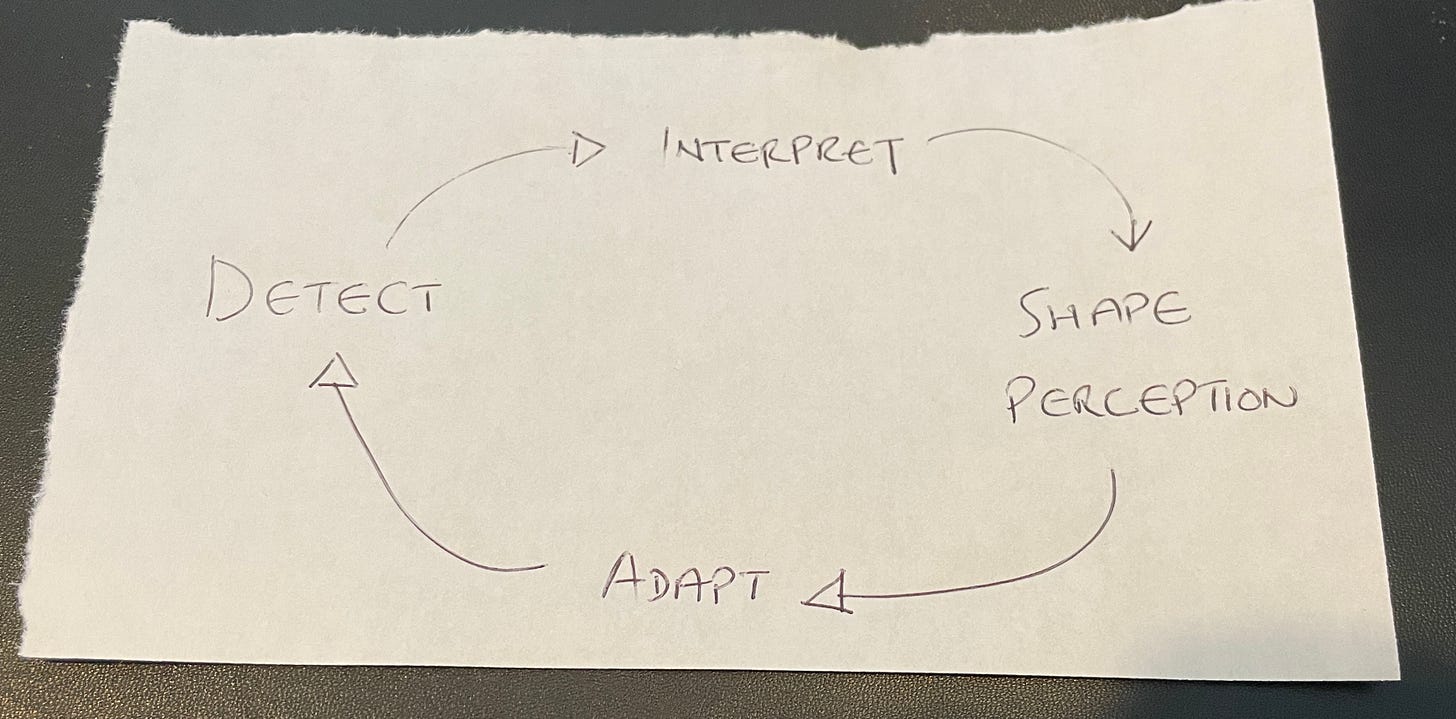An idiosyncrasy of working in Product Management is that you come across terminology that is used ubiquitously, but is widely open to interpretation. There are multiple examples of this abound such as “product-market fit”, “product-led growth”, “outcomes vs. outputs” etc.
My favorite is the phrase “product sense” - a critical ingredient for great PMs in almost any product organization. A concept that any PM career rubric you come across will emphasize in some form or the other.
If you search online, you’ll see numerous attempts to define Product sense in an actionable, relatable way. These definitional attempts are similar enough in nature that they all hone-in on the same general idea. But they are also different enough in specific, narrow ways so as to make them challenging to reconcile. For example: whether data drives product sense or complements it, how much solution design is part of product sense, whether product sense is distinct from business acumen or not, etc. Regardless, let’s assume that most definitions out there are roughly aligned to something that looks like this -
Product sense is the intuitive ability to anticipate user needs and envision solutions that will resonate with them - combining empathy, creativity, and analytical thinking.
For many PMs, it can be frustrating to deal with a concept that is so core to our jobs, yet so subjective. How may we gauge our ability to anticipate user needs without reps and trial-and-error? How can we reasonably demonstrate or evaluate empathy in a job interview? Can we reverse-engineer the degree to which decision-making that led to a product succeeding or failing was shaped by a PM’s intuitive ability - versus other environment factors (ex: luck)?
For years, I felt the need to wrestle with this subjectivity. I saw it as a flaw or problem to solve, a bug to fix. But over the years, I’ve come around to appreciating the value of product sense by choosing to embrace its subjectivity - truly…as a sense - vs. fighting it.
Product sense, as a “sixth sense”
Imagine for a moment that we were to treat product sense the same way we might our physical senses (i.e. sight, hearing, touch…). The metaphor here is quite useful. All of our physical senses have a few common characteristics -
Their purpose is to detect external stimuli, and they employ specific organs & receptors to do so
They are designed with layers of transmission and interpretation for the brain
They integrate and interplay with each other to help shape perception of our environment
They adapt over time to continuous, evolving stimuli
Our physical senses are the pathways between our nature and nurture. The bridges between our minds & bodies, and the environment they exist within. Our senses function independently, but also in concert with each other. They are fluid and adaptive in nature, not fixed or static. We’re born with our senses, and they are then trained and nurtured over time.
Building on the metaphor, we can use the unpack above to make peace with the sense behind product sense. In fact, it leads us to a new (perhaps more compelling) articulation of what we mean when we refer to product sense -
Product Sense is the ability to detect → interpret → adapt to the needs, wants and challenges of our users. Similar to our physical senses, Product Sense helps us continuously shape an accurate, holistic perception of the world of our users - so we can make excellent product decisions.
Implications
If this reframing of product sense resonates for you, you may want to ponder further a few implications & takeaways -
Consider the ‘organs’ that you need to feed your product sense. These are the mechanisms & interactions you need to put in place to collect sufficient external stimuli. Ideally without suffering sensory overload! Research and discovery work, sales and success touch-points, customer support & escalations, etc. are all examples of ‘organs’ that you have at your disposal to seek out that ‘stimuli’.
Our perception is shaped by our interpretation, and our interpretation is both personal and innate to us. Have you ever wondered why sometimes a team can all observe the same research session together, but come out with widely different interpretations of user feedback? It’s important to note that our motivations, biases, level of empathy & care, self-orientation etc. all feed into our ability to accurately interpret user input and feedback (stimuli). To read between the lines, and to separate signal from noise. It is why product sense is inherently subjective, and why we should embrace that aspect vs. fight it.
Product sense is continuous and unbounded. As long the world of our users is evolving, there is no limit to our ability to deepen and expand our product sense too. We should see product sense less as a binary trait or skill (we either have it or not, we’re either good at it or bad…) and more of an evergreen system to be nurtured and honed continuously.






“These are the mechanisms & interactions you need to put in place to collect sufficient external stimuli… Research and discovery work, sales and success touch-points, customer support & escalations, etc. are all examples…”
Yes! The only way of practicing and developing product sense is to feed it external information. Get out from your own team and bubble and “see the world”
Product sense = exposure + time.
You could word it as ‘experience’, but I think ‘experience’ implies it can only be learned through 'real work’.
Exposure + time works for me, because it means you can just expose yourself more to learn more. Sign up to random apps, attempt PM challenges, take on PM interview questions (even if you’re not looking for a job).
All in our control